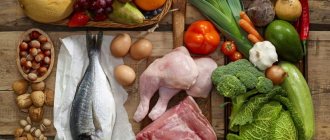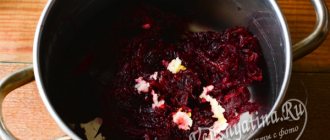The student is always hungry. And this is normal: young people should spend their time not on healthy and high-quality food, but on entertainment. After all, this is precisely why we are given youth, isn’t it?
But it’s better to preserve at least a little bit of health, so that in the near future you don’t have to go to the doctor and heal the wounds received as a result of an unhealthy diet. Therefore, we decided to tell you about how to eat cheaply as a student, and so that the food does not cause much harm to your health.
And now in more detail about proper nutrition for students. Menu for every budget!
Sandwiches in a hurry
When you're in a hurry to get to a lecture, but want a quick snack, good old sandwiches come to the rescue. For example, students like to eat them with mayonnaise and sprats or sausage. It also turns out delicious when you fry bread, after putting a slice of cheese on it and pouring egg over it all. A student's sandwich always saves him.
Sausage sandwiches are a real treat
Fried dumplings
There is no student who would not call this dish his favorite. It looks simple, but in fact it is important to prepare it correctly. The poor student makes sure that the dumplings are not too overcooked. It is important to catch the line between crispy crust and burnt dough. This is a whole art, because in the hostel friends can distract you at any moment...
Fried dumplings are also delicious with sour cream or cheese sauce. Some even eat them with milk-coated anniversary cookies.
Fried dumplings are beautiful!
Examples of easy to prepare dishes
If you are not a vegetarian, then you need to eat meat at least once a week. With student incomes this can be a problem, but it can be solved by choosing the offal: hearts, navels, liver. You can get a healthy and satisfying dish if you chop an onion, fry it, and add it to the pan. Add a portion of navels there and simmer over low heat for several hours. If desired, you can add sour cream or tomato paste as a dressing. Chicken navels stewed in this way can be eaten with any side dish, including vegetables.
You can make mushroom soup. It is quite possible to pick mushrooms on your own if you and your friends make forays into nature. If not, then look for inexpensive oyster mushrooms or champignons in the store. The mushrooms are washed and cleaned, boiled for 15 minutes. The mushroom broth is poured into a separate bowl, and the mushrooms themselves are finely chopped, seasoned with cream and diluted with broth. It turns out to be mushroom soup, to which you can add croutons. It is important that the soup comes to a boil, but does not boil.
Food delivery healthy nutrition Moscow | Delivery of ready-made food for a week reviews | Healthy eating for the office | Detox order | Vegan ready meal delivery | Complex for weight loss | Ready-to-eat meals for athletes with delivery | Delivery of food for vegetarians
Dembel porridge
In order for a student to have strength, he must eat porridge in the morning. Have you ever heard of “demobilization porridge”? So, this is a real delicacy not only in the army, but also among students! Cookies are crushed in a bowl, poured with condensed milk and the whole thing is mixed. The porridge is ready!
Another recipe: boil oatmeal in water and add raisins and apple. If you wish, you can boil beets instead, chop them finely and add them to the porridge with butter.
For breakfast, you can also make an omelet with carrots. You need to beat the whites until fluffy and fry the omelette. Before frying, grate the carrots and season with olive oil, and then add to the whites.
Lavash student style
On cold winter evenings, when a student wants a quick and tasty snack, lavash comes to the rescue! In 10 minutes you can make a very satisfying dish from it. For example, fry it with an egg and put tomato, cheese and sausage inside.
You can also make a roll with crab sticks - take pita bread and put the filling on it: grated cheese, chopped crab meat or sticks, egg, cheese, garlic and a little herbs, all this needs to be seasoned with mayonnaise. Roll up the pita bread and leave it in the refrigerator for an hour.
Bread is the head of everything
And how students love bread! For example, a dish like “mother-in-law’s tongue” - you need to grate cheese and mix with mayonnaise, add a little garlic. First cut the eggplant into slices, fry in a frying pan and put the mayonnaise-cheese mixture on it. And after that on bread.
You can also cut the apple into pieces and add to the cottage cheese. Spread butter on bread and add this mixture.
When you want something sweet but don’t have money, you can sprinkle sugar on your bread. Some students also like to dip it in juice from vegetable salad. It turns out very tasty.
Bread with butter and sugar is a favorite dessert among students
Meals depend on the type of student
But first, let's figure out what students eat. Here are 3 popular categories into which students are usually divided:
- Student-"doshirak". This representative eats only rolltons and doshiraki, instant soups, sausages, pasta, pasties with cats. In general, his food is everything that is filling, cheap and can be eaten with ketchup-mayonnaise. Most often, this is what hostel students eat, since eating healthy is not profitable here: at any moment, 100,500 neighbors will come to you, ready to forcibly share your meal with you.
- Vegetable students. This includes most of the fair sex. Under the guise of preserving their figure, they make up their diet mainly from vegetables: onions, cabbage, potatoes (someone tell them that this vegetable “preserves” the figure in the same way as pies made from yeast dough!). however, they don’t disdain porridge either. On their table you can always find something that you can’t lure guests with: oatmeal, rice and unsalted buckwheat.
- Student breadwinner. These are smarter than everyone else: they don’t spend money on food at all. Their tactics are as follows: we make as many friends as possible and visit them every time we want to eat. And the money saved will always be something to spend on!
And now about the main thing.
Kefir with bread
Finally, we will tell you what students drink. Of course, no one canceled the compote. But they love to cook something interesting and, at the same time, simple. For example, you can cut an apple into slices and add yogurt to it without any additives. If the poor student is lucky and has a mixer, then he can whip milk with berries, and then eat this cocktail with a spoon. By the way, it turns out to be very tasty when combined with eating a sandwich with cheese.
You can also do something interesting with tea: add 100 ml of drinking yoghurt to a glass of black tea with milk. No sugar needed. The same can be done with green tea, but add a banana to it.
And a student cannot do without kefir! He drinks it with bread, lemon and oatmeal cookies.
Kefir with bread - and you can continue to study
Lunch for 50 rubles: what Moscow students eat
African grasshoppers in their own juice
Peoples' Friendship University of Russia is an unusual university. Students come here from the farthest corners of the world: from Burkina Faso, India, China, Vietnam, Nepal, Mongolia, Lebanon... For the canteen cooks at the Peoples' Friendship University, pleasing everyone is not an easy task. Africans love fried grasshoppers, Indians do not eat meat.
The RUDN University campus is perhaps one of the most colorful. And largely thanks to the food! The fact is that here you can try many world cuisines, and they will be prepared to a very good standard.
“We have an unspoken attitude at RUDN,” the university’s press service explains, “that every student should eat as if he were visiting his grandmother.”
And the grandmothers of African students often seem to send their granddaughters parcels of fried grasshoppers and pickled maggots. Because if anyone wants, anyone can really try all this - just come to the campus on Miklouho-Maclay Street and talk to the people. Believe me, there will be a lot of people willing to treat you to exotic delicacies.
The RUDN University hostel has 13 buildings. And each has one or two national cafes. Usually they are organized by former RUDN University graduates.
What’s especially nice is that you don’t need special passes to get into these cafes: entry is free for absolutely everyone.
Peruvian, Chinese, Indian, Ethiopian, Lebanese - there are all sorts of cuisines there. Of course, you can’t try everything, but you definitely need something.
First, we decided to go to a cafe with Peruvian and Mexican menus. Of course, the best way to start getting acquainted with the cuisine of this country is with traditional ceviche - a kind of assorted seafood. It would seem, where is Moscow and where is the sea? However, surprisingly, all the seafood was fresh, not frozen, and most importantly, there was a lot of it. This entire gastronomic feast was seasoned with a very simple but very tasty hot sauce. And although the price of ceviche is steep by student standards - as much as 400 rubles, this money is not wasted. With a stipend you can afford this once a month. In general, after looking over the menu, it became clear that ceviche is one of the most expensive dishes. It is quite possible to have lunch on a budget. The establishment itself looks rather modest: no white tablecloths, no elaborate table settings - simple, but cozy.
In the RUDN cafeteria, a dish cannot cost more than 150 rubles.
Having tasted Latin American dishes, we go in search of even more exotic delicacies. There are many students from Arab countries at RUDN, and, accordingly, in almost every cafe you will find Lebanese dishes on the menu. In the very depths of the campus there was a nice Arabic-style cafe. We order chickpea hummus with pine nuts and shawarma on a plate. Price - 130 rubles. But the portion is kind of small for the hungry students, exhausted from cramming, and there are only two of us. We have to add shawarma - it is officially stated that it is Lebanese: everything is the same, only disassembled and with French fries, which is very strange, but tasty. Total lunch: 350 rubles for two.
And we have not yet visited Chinese food stalls, widely known in narrow RUDN circles. They say they serve luxurious desserts - fried milk and fruits in caramel.
“But this is all on campus, and in the academic building there are regular institute canteens,” the press service explains. — They are in great demand among students from all countries without exception. What do you love most? Shchi is perhaps the most popular dish (15 rubles per serving), rassolnik (18 rubles), pea soup (16 rubles), rich borscht (25 rubles). The casserole is incredibly popular; it is also called Russian cheesecake (depending on the filling - from 30 to 60 rubles). In the morning, our chefs bake donuts with cottage cheese, which are easily sold on the spot (22 rubles per piece). The cheapest dish is regular pasta (7 rubles per plate). Buckwheat - 9 rubles. And although the menu is focused on Russian cuisine, there is also something exotic in it. For example, African omelette with minced meat (about 70 rubles) or French cream of mushroom soup (the most expensive option costs about 40 rubles). The most expensive dish is French meat (133 rubles). In general, there cannot be dishes more expensive than 150 rubles in our institute canteens, this is the request of the student council to the rector.
On the RUDN campus you can eat real Indian curry. Photo: Ksenia Andronnikova
But that's something else! It turns out that once a month there is a real freebie - a favorite concept among students. It's called "national week". This is when representatives of some country organize their holiday at the institute Interclub. They set up a real buffet with national dishes. This is a favorite event for all students, since the food is absolutely free and everyone can come and eat to their heart's content. In a word, you won't go hungry.
Cabbage soup at Moscow State University
How do students of the country's main university, Moscow State University, eat?
The MSU catering facility has existed since 1953 and includes 12 canteens, 2 snack bars, a culinary department, and 20 buffets. The canteens, according to the students themselves, are very tasty and cheap. The pricing policy is very pleasant: the cost of a full lunch is 130–160 rubles.
We decided to inspect the canteens in the Main Building on Vorobyovy Gory. It turns out that there are three of them: two main ones and one professorial one (the only difference between the latter is that the room is smaller and teachers often have lunch there). But the menu and prices are the same in regular student canteens and in this one. Korean-style carrots - 18 rubles. Mimosa salad - 50 rubles. Green cabbage soup with egg, chicken fillet and sour cream - 45 rubles. Cabbage soup - 30 rubles. There are generally plenty of choices for the second one. For example, we enjoyed chopped turkey fillet cutlets for 65 rubles. A city rump steak costs 82 rubles, and a boiled sausage costs only 26 rubles. For dessert, melon sprinkled with sugar for 40 rubles.
In the cafeterias of Moscow State University, professors often eat together with students. Photo: Dina Karpitskaya
The most popular among students is the newly renovated canteen in sector “B”. During the long break, 10 minutes after the bell, there is nowhere for the apple to fall. Salads and cutlets fly off the shelves at the speed of sound.
“That’s nothing,” the cooks smile. “Everyone comes running to our signature pancakes in the morning.” No matter how much we bake, they are sorted out in a matter of minutes.
On the ground floor there is a so-called “puck”. There are four buffets in a circle. Usually everyone grabs coffee there before classes or uses it as a snack on the run if there is no time to have lunch in the cafeteria. Plus, at the entrances to each dining room there is a buffet with sandwiches and desserts.
Salads from the Moscow State University cafeteria Photo: Dina Karpitskaya
Many graduates of the country's main university fondly remember the times of their studies.
“The students at Moscow State University were always fed very well,” recalls Dmitry Rogovitsky, a graduate of the Faculty of History. “But I especially miss the famous carrot pizza.” We were often sent to the State Public Historical Library. It was and remains the main library of the history department of Moscow State University. Everyone wrote reports, term papers, dissertations there, and prepared for tests and exams. Sometimes you had to stand in line for 3-4 hours, which stretched along the picturesque Starosadsky Lane, to get inside. But I often went there myself solely because of the buffet. Its highlight was the carrot pizza. It felt like all the ingredients left in the kitchen at the end of the day were put on an ordinary small bun. Every time, most of it turned out to be grated carrots, hence the name. Oddly enough, it was very tasty! It's probably due to the fresh test...
The dining room in the Main Building of Moscow State University has preserved its interiors from the last century. Photo: Dina Karpitskaya
I also remember a giant pot of cheap spinach soup. In recent years, the old library building has been under restoration, and the cafeteria is closed. In the new building there is not even a place to eat properly: in the lobby there is one machine with chocolates and chips. Hopefully, when the renovations are finished, the pizza will return.
Quesadilla with shrimps at MGIMO
As one might expect, the most pompous student catering establishments can be seen at the Moscow State Institute of International Relations. I can’t even call them canteens. Restaurants! Coffee shops! Pizzerias! The university, which prepares future diplomats, apparently accustoms its students to a beautiful life from a young age. This is probably correct. Otherwise, such a diplomat will come abroad, go to a meeting with his foreign colleagues in a restaurant, open the menu, and there is no borscht in it, just all sorts of quesadillas and sea bream fillets. He will be confused and lose face in front of foreigners. Disorder.
Let's start with the fact that at MGIMO an entire separate three-story building is dedicated to cafes and canteens; people call it that way - a “three-story building.” On its first floor there are fast food counters. There is a burger place, a pizzeria, Viennese waffles, and sushi. Coffee corners with all sorts of different types of invigorating drinks: strong cappuccino, light cappuccino, ginger latte, almond latte, raf coffee. The prices are exorbitant, the same as in Moscow cafes. For example, ice latte - 180 rubles, espresso - 120, restretto - 140 rubles.
Author's desserts at MGIMO. Photo: Dina Karpitskaya
What about food? Here, for example, is the so-called “Pancake Station”: a regular pancake costs 40 rubles, and one with mushroom and chicken filling costs 190. For 200 rubles you can eat a pancake with shrimp. Go ahead. Meat pizza - 580 rubles, but you can get a quarter for 150. "Margarita" - 220 rubles (quarter - 60 rubles). Burgers and cheeseburgers - from 70 to 150. In a word, not student prices. But credit cards are accepted everywhere.
But, to be honest, we didn’t notice any rush at fast food counters. But in the dining room, which is on the second floor, there was absolutely nowhere to sit. This is understandable, prices are lower there and the food is more familiar. Herring under a fur coat - 50 rubles. Soups for 50–60 rubles. For the second course they give, for example, chicken fillet with vegetables for 150 rubles, a beef cutlet for 120, fried fish for 140. And a beef rump steak will cost 190 rubles, which is 100 rubles more expensive than at Moscow State University! Teachers eat there, but there is a separate room for them on the third floor.
“Well, if you are very modest, just soup and salad, then you can get by with just over 100 rubles,” says second-year MGIMO student Svetlana. — But if you want a full meal, then in this canteen of ours you will spend about 500 rubles. For example, Caesar salad alone costs 250. I am from St. Petersburg, I live in a hostel, and my parents are ordinary, not rich. For everything, my mom and dad send me 12–15 thousand rubles a month. I live on them. Of course, I cook for myself; I often bring sandwiches with me to classes (the hostel is an hour away). I sometimes look into all these fast food places. But I only go to our MGIMOshny restaurant if there is some kind of event planned there. For example, quite recently there was a Greek evening there - the ambassador of this country came to meet with students.
Restaurant on the territory of MGIMO. Not only students, but also ambassadors often dine here. Photo: Dina Karpitskaya
Just like that - it turns out that there is a restaurant at MGIMO, a real one, with a pretentious interior and white tablecloths (it is not in a “three-story building”, but in another building). And many students stay there after (and sometimes instead of) classes. Well, what can I say, if you compare the price tag with an establishment of a similar level in the city, then it is, of course, lower. But if we take into account that this is still a university where poor students study, how often will they be able to afford shrimp quesadillas (160 grams) for 360 rubles, or beef medallions (160 grams) for 390 rubles with their scholarship? , or check out “BBQ time”?










